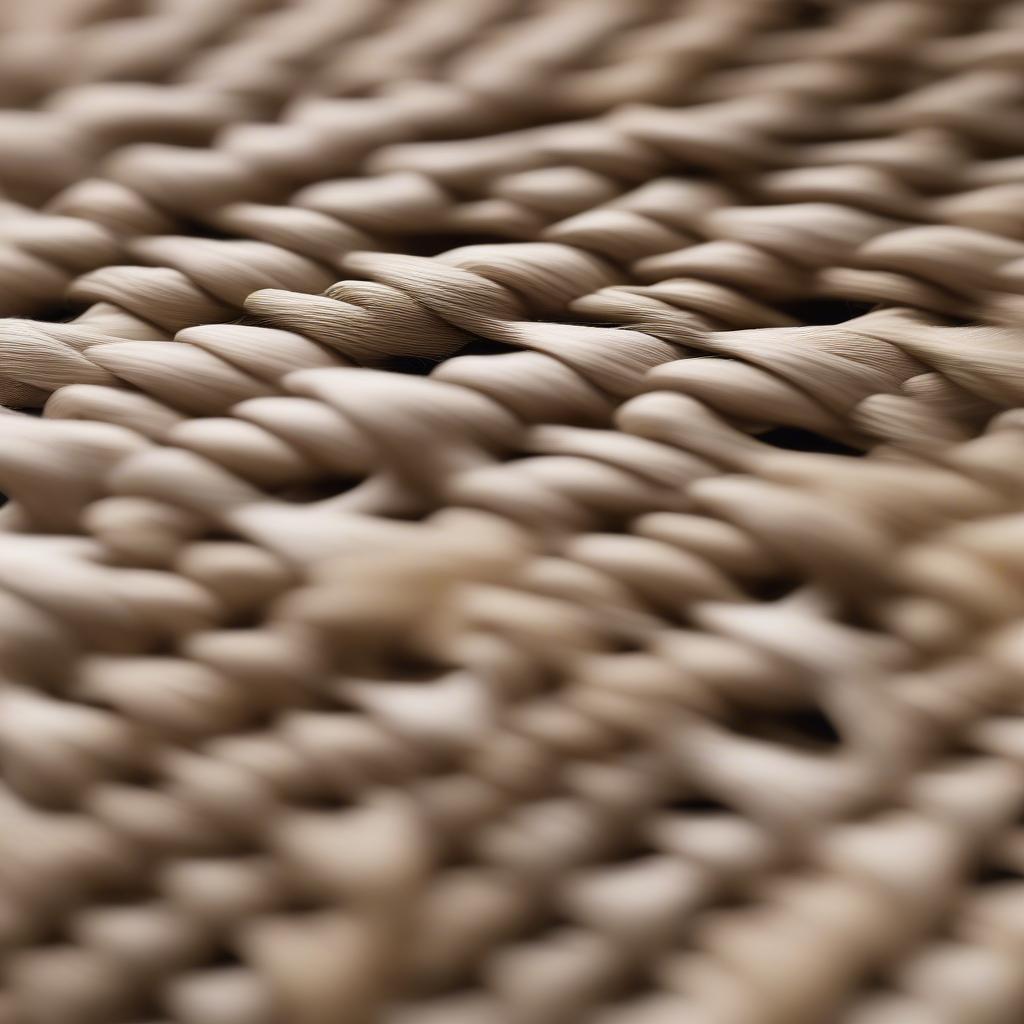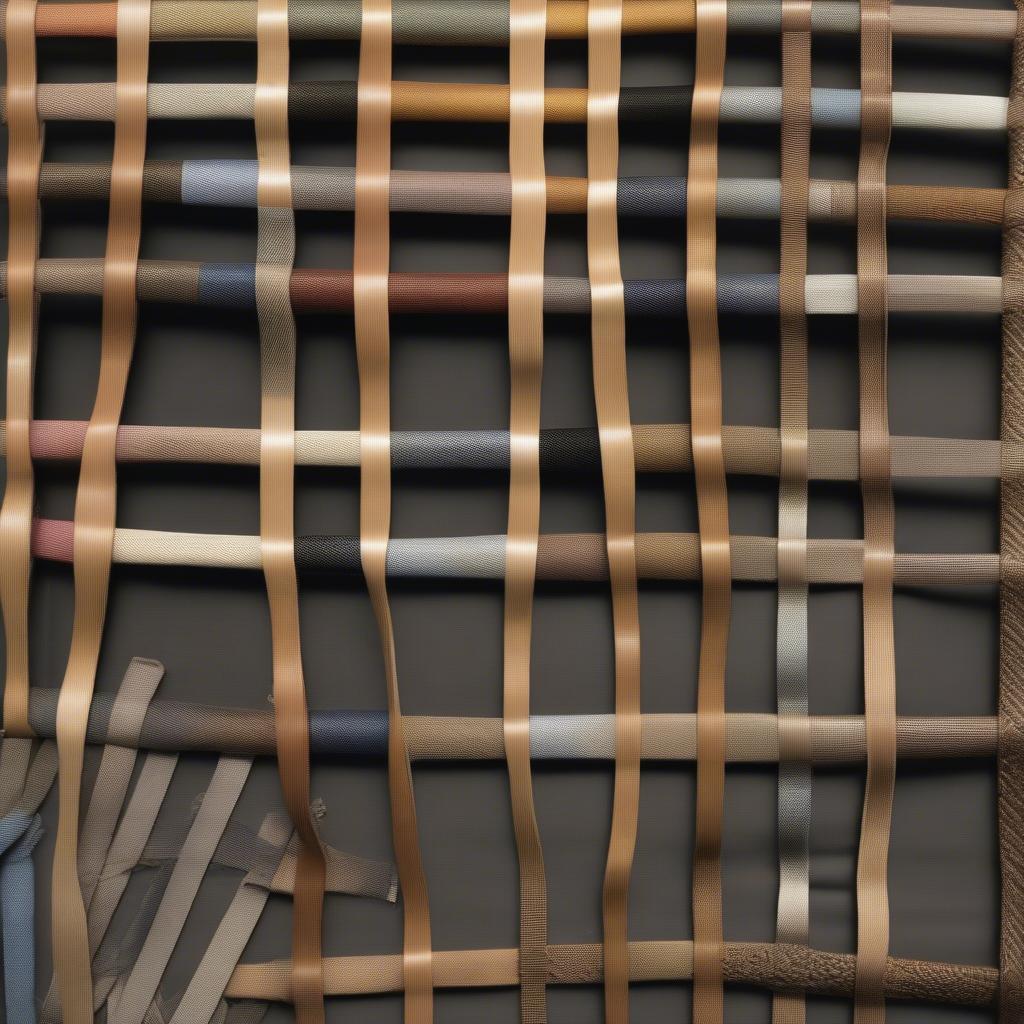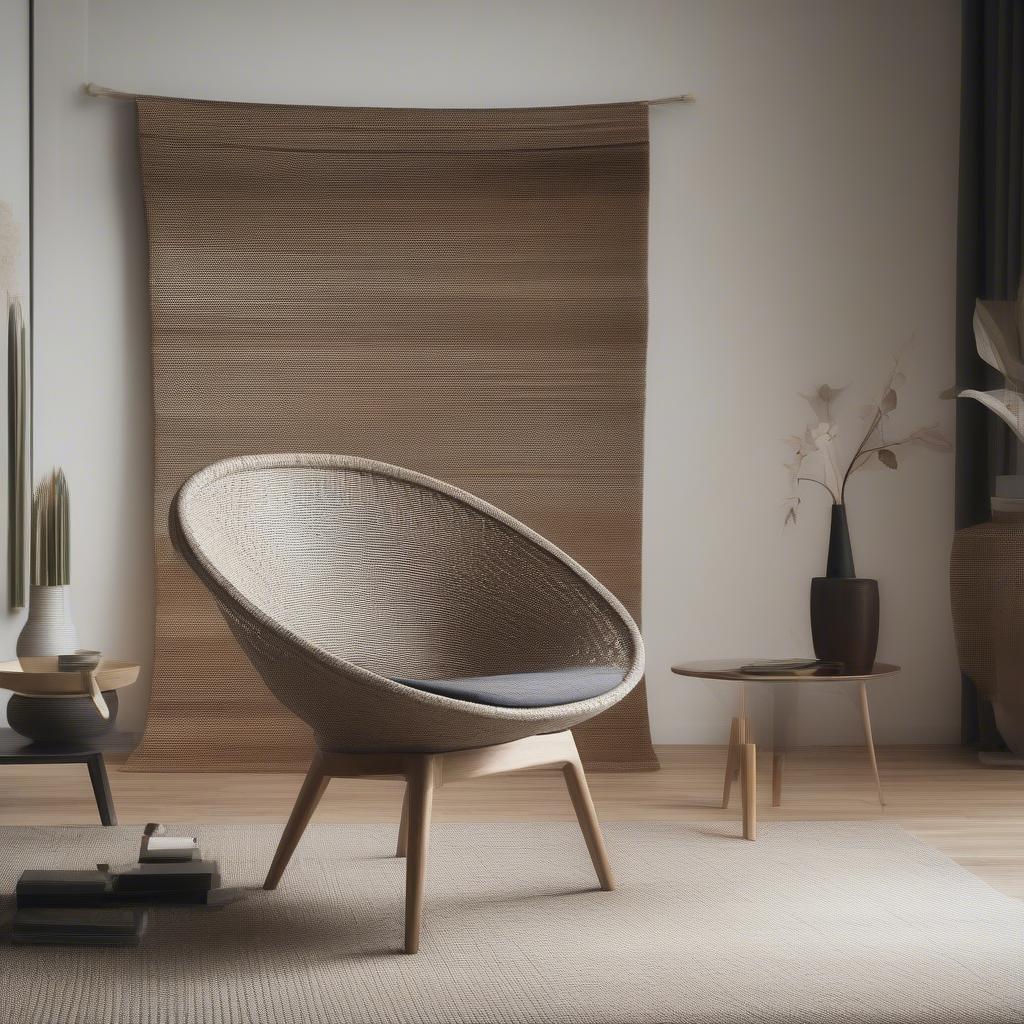Weave Chair
Weaving Chair: A Guide to Handcrafted Comfort and Style
A Weaving Chair is more than just a place to sit; it’s a testament to artistry and craftsmanship, blending form and function in a unique way. Whether you’re looking to add a touch of rustic charm to your home or exploring the world of handcrafted furniture, understanding the nuances of weaving chairs is key. This guide delves into the world of woven seating, exploring materials, techniques, and the enduring appeal of these handcrafted pieces.
Understanding the Art of the Weaving Chair
 Close-up of a weaving chair showcasing the intricate detail of natural fiber weaving
Close-up of a weaving chair showcasing the intricate detail of natural fiber weaving
Weaving chairs involves intertwining various materials, from natural fibers like wicker and rattan to synthetic options, to create a supportive and aesthetically pleasing seat. This traditional craft has been passed down through generations, resulting in a wide array of styles and techniques. The beauty of a weaving chair lies in its unique blend of durability and artistic expression. Each chair tells a story, reflecting the skill and creativity of the artisan who crafted it. Interested in learning how to weave your own chair seat? Check out our weaving chair seats instructions.
What Materials are Used for Weaving Chairs?
Wicker and rattan are popular choices for weaving chairs due to their flexibility, strength, and natural beauty. Wicker, a technique rather than a material, often utilizes rattan, willow, or bamboo. Rattan, a vine native to Southeast Asia, provides a sturdy framework, while willow and bamboo offer a lighter, more delicate aesthetic. Other materials, such as seagrass, rush, and even paper cord, can also be used to create unique and visually appealing woven seats. For more information on using these materials, see our guide on weaving chair seats with cane rush and splints.
Different Weaving Techniques for Chairs
 Different weaving patterns used in chair seats, showcasing a variety of textures and designs
Different weaving patterns used in chair seats, showcasing a variety of textures and designs
A variety of weaving techniques contributes to the distinctive look and feel of each weaving chair. From the simple yet elegant open weave to the intricate and complex herringbone pattern, each technique demands skill and precision. The open weave allows for breathability and a lighter feel, while tighter weaves provide greater support and durability. Explore the world of cane weaving with our resource on cane weaving chair seats.
How to Choose the Right Weaving Chair
Choosing the right weaving chair depends on various factors, including your personal style, the intended use, and the overall aesthetic of your space. Consider the size and shape of the chair, the material used, and the weaving pattern. A high-backed weaving chair with a tight weave offers excellent support for lounging, while a smaller, open-weave chair might be perfect for a dining area. Ever wondered about the specific term for weaving chair seats? We have the answer: what is the word for weaving chair seats.
The Enduring Appeal of Weaving Chairs
 A modern living room featuring a stylish weaving chair, demonstrating its versatility in contemporary interior design
A modern living room featuring a stylish weaving chair, demonstrating its versatility in contemporary interior design
Weaving chairs have stood the test of time, seamlessly blending traditional craftsmanship with contemporary design. They offer a unique combination of comfort, durability, and aesthetic appeal, adding a touch of timeless elegance to any space. Whether you prefer a classic or modern style, a weaving chair can enhance the beauty and functionality of your home. For a specific example of a weaving chair, explore the ashford weaving chair.
“A well-crafted weaving chair is an investment in both comfort and artistry,” says renowned furniture designer Anya Sharma. “It’s a piece that can be passed down through generations, a testament to the enduring beauty of handcrafted furniture.”
Artisan weaver, Ben Carter adds, “The process of weaving a chair is meditative and rewarding. Each strand tells a story, and the finished product is a reflection of the weaver’s dedication and skill.”
In conclusion, a weaving chair represents more than just a piece of furniture; it’s a work of art, a symbol of tradition, and a testament to the enduring power of handcrafted design. Choosing the right weaving chair can transform your living space, adding a touch of timeless elegance and handcrafted comfort.
FAQ
- What is the difference between wicker and rattan?
- How do I care for my weaving chair?
- Are weaving chairs suitable for outdoor use?
- Can I repair a damaged weaving chair myself?
- What are the different types of weaving patterns used in chair seats?
- How do I choose the right size weaving chair for my space?
- Where can I buy authentic handcrafted weaving chairs?
Do you have other questions about weaving chairs or other handcrafted furniture? Explore our other helpful articles on our website.
Need help choosing the perfect weaving chair? Contact us! Hotline: +84 388 951 999, Hanoi, Vietnam or Tech Avenue, Suite 12, San Francisco, CA 94105, USA. We have a 24/7 customer service team ready to assist you.
